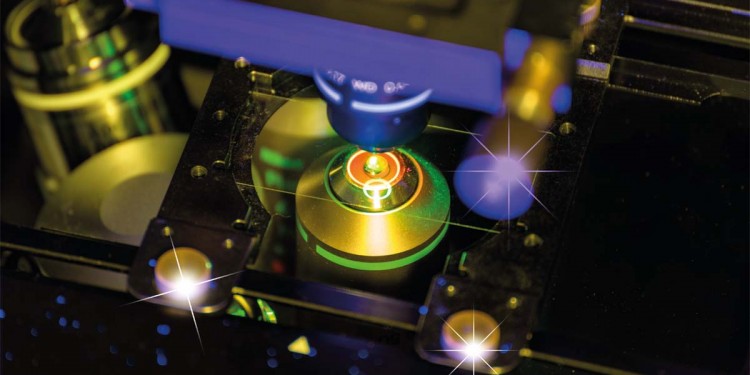
Optical tweezers control nano containers
The renowned Journal "Optics & Photonics News" selected a publication of the Team of Prof. Cornelia Denz into the worldwide list of the 30 best publications in the year 2018. The Journal traditionally highlights these publications from optics and photonics in a special edition in December. An expert jury reviewed a total of 113 international studies from the past twelve months selecting the best and most influential contributions. In the last year, the Nonlinear Photonics group of the University of Münster joined the list with two publications.
The past year’s highlighted publication, the discovery of Dr. Robert Meissner and Dr. Neus Oliver from the “Nonlinear Photonics” team is honoured. They used nobel-awarded optical tweezers for trapping of cylinder-like nanocontainer crystals. Optical tweezers are focused laser beams that allow to grab, fix and move micro- and nanoscale objects just by light, without physically touching them. The nanocontainers that have now been employed by the Denz group are porous and contain nanometre spaced channels. This makes them ideally suited for functionalizing nano survaces or to transport medical agents into organs or cells. While up to now only spherical beads have been implemented for force metrology in optical tweezers, measuring tiny forces as they are present on nanosurfaces or in the inner cells, the scientists proved that these nanocontainers can be employed as advanced force sensing probes, too. They discovered that it is important to quantify the rotation of the nanocontainers within the trap by actively “shaking” it. At the same time they showed that deviations from the ideal probe shape, e.g., due to shape defects, lead to an increase of the effective optical forces. Since these deviations can be detected by video microscopy, they allow users to select appropriate nanocontainers which are most suitable for the applications in consideration. The findings are an important step in nanoscale force metrology and will foster sensing cell forces and viscoelasticity which are vital biophysical indications of cancer, Alzheimer and vascular diseases. The original work was published in March this year in the international Journal "Particle & Particle Systems Characterisation".
